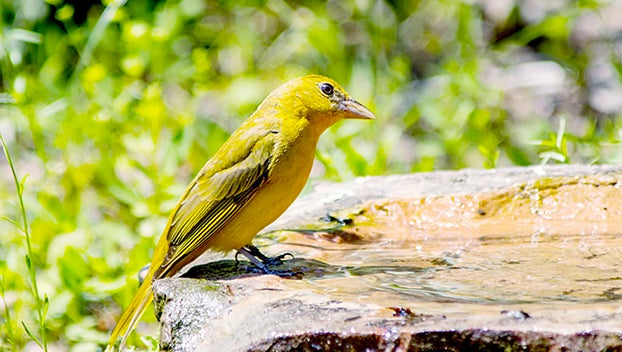Audubon group outlines growing plans for Sabine Woods
Published 12:06 am Saturday, April 22, 2023

- Audubon Sabine Woods Sanctuary is a stop over for many species of migratory birds. (Courtesy photo)
|
Getting your Trinity Audio player ready...
|
SABINE PASS — An area that is a major stopover for migrating birds is getting some upgrades that are sure to please our feathered friends.
The Golden Triangle Audubon Society maintains the Sabine Woods Sanctuary on Texas 87 in Sabine Pass.
Christine Sliva, president of GTAS, said grant funding is going toward planting more oak trees and getting rid of invasive species in the area.
Sliva explained the migrating birds are flying across the Gulf of Mexico from South America and stop along the coast, where there are pockets of live oaks and mulberry trees providing shelter and food for the birds. It’s a great place to rest before continuing their journey north.
Sliva said there are spots along the Gulf Coast such as High Island, Louisiana and Florida.
Sabine Woods is a major ecological area for migrating birds and brings birders from across the U.S. and world.
“Birding is growing a lot as a hobby,” Sliva said. “We have had people from Germany, Canada and New York visit.”
On a recent day birders chronicled 20 different warbler species. Sliva said that changes by the day.
Being a birder doesn’t necessarily mean a person has to travel to Sabine Woods and walk the trails. A person can sit outside their home and enjoy birds or watch them from their car, she said.
Sabine Woods information
According to the Texas Ornithological Society, Sabine Woods is comprised of 27 acres of large oaks located along the Chenier Ridge that provide protected habitat to migratory songbirds.
Port Arthur Convention and Visitors Bureau is a big proponent of birding and offered the following information:
“Sabine Woods is considered one of the most productive migrant stop-overs along the entire Texas Coast for spring and fall migration. Hundreds of hummingbirds, mostly Ruby-throated, may swarm lantana thickets in early fall. Spring draws warblers, thrushes, tanagers, vireos, orioles, flycatchers, etc. Large oaks, mulberry trees, ponds and areas of thick undergrowth provide a protected stopping point on the coast for neotropical migrants. Warblers, Vireos, Grosbeaks, Flycatchers, Thrushes, Tanagers and Orioles are common visitors from late March through mid-May, and, in lesser numbers, from early September through late October.”
— Written by Mary Meaux





